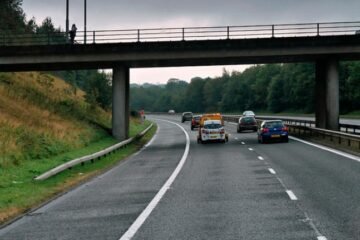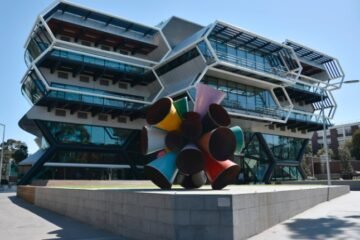A new poll has revealed that Labour has overtaken the SNP in voting intention for the next UK general election, while the Conservatives have slumped to third place. The poll, conducted by Redfield and Wilton Strategies, also showed that Labour has a narrow lead over the SNP in the regional list vote for the Scottish Parliament, while the SNP remains ahead in the constituency vote.
Labour and SNP Tied on 35% for Westminster
The poll, which was published on Wednesday evening, found that both Labour and the SNP would win 35% of the votes in Scotland if a general election were held tomorrow. This represents a fall of two percentage points for the SNP and a rise of one point for Labour since the last poll by the same firm in August. The Conservatives would trail behind with only 15% of the vote, down by two points, while the Liberal Democrats would get 8%, up by one point. The Scottish Greens and Reform UK would each get 4%, and Alba would get 2%.
The pollster Mark McGeoghegan said that different seat projections from the results predicted different outcomes, depending on how the votes were distributed across the constituencies. He said that there were “lots of urban and central belt marginals” in the models, which added “a high degree of uncertainty” to the predictions. However, he suggested that Labour could win more than 40 seats in Scotland if the swing was uniform, while the SNP could lose more than half of their current 47 seats.
Labour Leads SNP by 5% in Regional List for Holyrood
The poll also asked respondents how they would vote in a Scottish Parliament election, and found that Labour had a slight edge over the SNP in the regional list vote, while the SNP maintained a clear lead in the constituency vote. According to the poll, 39% of Scots would give the SNP their constituency vote, compared to 30% for Labour, 16% for the Conservatives, and 8% for the Liberal Democrats. The Scottish Greens and Reform UK would each get 3%, and Alba would get 1%.

However, in the regional list vote, Labour would get 30% of the vote, followed by the SNP with 25%, the Conservatives with 15%, and the Greens with 14%. The Liberal Democrats would get 9%, Alba 4%, and Reform UK 3%. The poll suggested that Labour’s lead in the list vote was partly due to some SNP voters switching to the Greens or Alba, as well as some Conservative voters switching to Labour.
No Leads Yes by 9% in Independence Referendum
The poll also asked people how they would vote in a Scottish independence referendum, and found that No had a comfortable lead over Yes, with 49% of Scots saying they would vote to remain in the UK, and 44% saying they would vote to leave. When the undecided voters were excluded, the No lead increased to 10 points, with 55% of Scots backing the Union, and 45% supporting independence. The poll indicated that the No vote had increased by one point, and the Yes vote had decreased by one point, since the last poll by the same firm in August.
The poll also asked people about their views on the timing of a second independence referendum, and found that 41% of Scots thought that there should not be another referendum in the next five years, while 36% thought that there should be one in the next two years. Another 14% thought that there should be one in the next three to five years, and 9% did not know.
Analysis: A Seismic Shift in Scottish Politics?
The poll results have been hailed by Labour as a “seismic” shift in Scottish politics, and a clear sign that Scotland could lead the way in delivering a Labour government at Westminster at the next general election. The Scottish Labour leader, Anas Sarwar, said that the results showed that Scottish voters were “sick of two tired, failing, incompetent governments”, and that they wanted a “fresh start” and a “change”. He also credited the UK Labour leader, Keir Starmer, for changing the UK Labour party and contributing to the victory.
The SNP, on the other hand, has admitted that the poll results were disappointing, and that the party needed to carry out an urgent postmortem to investigate why it had lost so comprehensively. The SNP’s Westminster leader, Stephen Flynn, said that the party needed to respond better to the cost of living crisis, which was the overarching issue in the poll. He said that the party needed to “come together as a collective” and “re-energise” its campaign for independence.
The poll results have also raised questions about the future of the Conservative party in Scotland, which has seen its support plummet to its lowest level since 2010. The Scottish Conservative leader, Douglas Ross, said that the poll was a “wake-up call” for his party, and that he would not take any vote for granted. He said that the Conservatives were the only party that could stand up to the SNP and defend the Union.
The poll results have also highlighted the potential impact of the Scottish Greens and Alba on the SNP’s vote share, especially in the regional list vote. The Scottish Greens, who recently entered into a cooperation agreement with the SNP, have seen their support increase by five points in the list vote, while Alba, the pro-independence party led by former SNP leader Alex Salmond, has seen its support double to 4%. Both parties have said that they would push for a second independence referendum as soon as possible, and that they would offer an alternative to the SNP’s policies.
The poll was conducted by Redfield and Wilton Strategies between 2 and 4 September, and involved a sample of 1,000 Scottish adults. The margin of error was estimated at 3.1%.


















